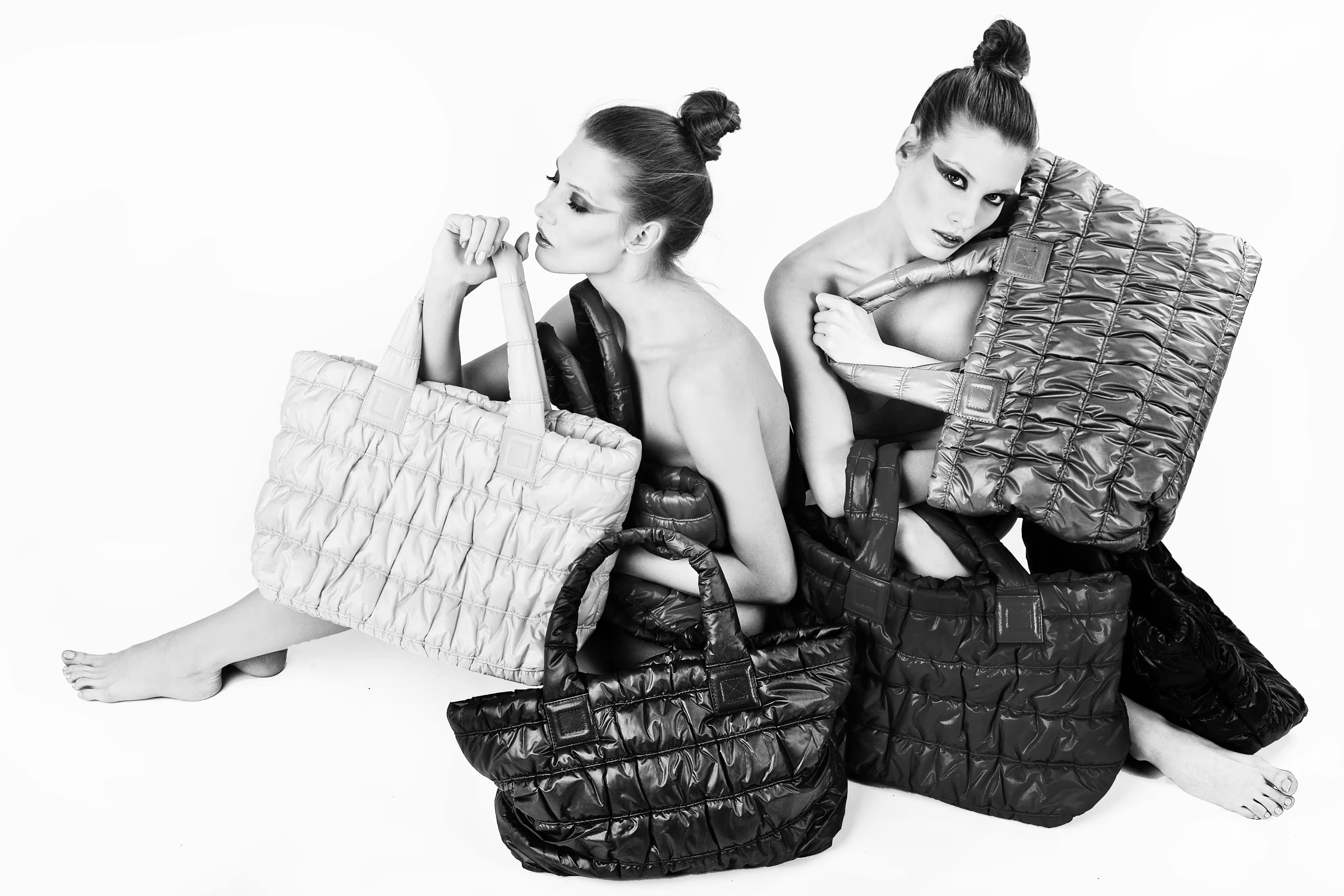Sustainable Retail: Standardizing Practices for a Thriving Future
What might be the best path forward for sustainable fashion? Standardized sustainability guidelines could be a gamechanger, creating greater efficiency and transparency while growing consumer trust.
%2520(1).avif)
The State of Sustainability in Fashion

It hasn’t been that long since sustainable fashion brands were few and far between. And while many companies have pivoted to implement a sustainability strategy, there’s still much more work to be done to significantly reduce the environmental impact of the retail industry.
Many brands with established goals still have a long way to go to reach them—in fact, a recent McKinsey study reveals two-thirds of brands are late to hit their targets for decarbonization (reducing or eliminating greenhouse gas emissions). The same study shows 40% of brands increased emissions after pledging to operate more sustainably.
That’s all to say, fashion still has a long way to go, facing shortcuts, misleading messaging, and a lack of transparency. Without clear standards, the industry remains vulnerable to greenwashing.
So what might be the best path forward for fashion? Standardized sustainability guidelines could be a gamechanger, creating greater efficiency and transparency while growing consumer trust.
Consumer Expectations in Sustainable Fashion
Today’s consumers, and the public at large, hold far higher expectations, including:
- Sustainable materials
- Transparent supply chains
- Sustainable manufacturing
- Fair wages and conditions for workers
- Environmentally-friendly packaging
Learn more about the state of sustainability in retail, what some brands are doing to get it right and how the industry can come together to shape a significantly better future for all.
Understanding Sustainability in Retail

Sustainability in retail varies but follows key principles: using safer materials, adopting eco-friendly manufacturing, and ensuring fair wages and safe conditions for workers.
Sustainable Materials

To be considered sustainable, dyes, fabrics, and components must be made from renewable resources. Their carbon footprints, and how much greenhouse gas they produce, should be nonexistent or minimal. The best materials also aim to reduce or eliminate the industry’s reliance on petroleum-based products.
Sustainable materials help reduce waste and offer innovative ways to reuse what has already been made. Given the cyclical nature of fashion and the average lifecycles of garments, sustainable sourcing is particularly essential in retail.
Thanks to the latest innovations, brands now have more sustainable options than ever before.
Types of Sustainable Materials
Sustainable materials include, but aren’t limited to:
- Natural dyes (such as vegetable dyes)
- Recycled, upcycled or deadstock fabrics
- Innovations like Orange Fiber and mushroom leather
- Fabrics made from regenerated fibers, including Modal and TENCEL™ Lyocell
- Organically grown or cultivated fibers, such as organic cotton, linen and silk
Brand Examples Leading the Way in Sustainability
Amongst JOOR’s vast client base of brands are numerous examples of companies that have made great strides in their sustainability journeys and in fact, see digitalization of their wholesale operations, a step towards this objective. Here are two such commendable brands who are prioritizing their sustainability efforts.
Mara Hoffman
The Mara Hoffman brand shows that transitioning to sustainability is both possible and successful. Already well-established, it committed to greener materials and manufacturing in 2015, setting a strong example for the industry.
Mara Hoffman transformed her brand by focusing on:
- Research and development/continuous innovation
- Finding the right sustainable materials to replace existing fabrics and components
- Connecting with other brands to exchange sourcing and manufacturing tips
Of course, her business didn’t change over night. But today, it’s a thriving, Climate Neutral-certified brand. And for other brands ready to make the transition, there are so many more resources available today to enjoy an even faster and easier transition. In 2023, Mara Hoffman was awarded the CFDA Fashion Award for Environmental Sustainability.
Farm Rio
The globally-popular Farm Rio is a strong example of sustainability, earning the rigorous B Corp certification—a challenging achievement that demands ongoing improvements for renewal every three years.
Still, Farm Rio meets B Corp’s standards and more through five pillars — nature, people, circularity, culture and transparency. Farm Rio’s inspiring sourcing and production standards include:
- Protecting Brazilian wildlife
- Reforestation initiatives
- Offsetting all of their emissions
- Reusing, recycling or donating leftover fabrics, trims, etc.
- Using responsible, sustainable materials
- Organic cotton
- Recycled polyester
- LENZING™
- ECOVERO™
- and more….
Sustainable Manufacturing
Brands are increasingly encouraged to adopt sustainable manufacturing processes to create high-quality apparel and accessories. This could include strategies like going circular, reducing waste, producing locally, offering supply chain transparency, or a combination of these efforts.
Shrinking The Fashion Industry’s Footprint

The Circular Economy
Some brands have invested in partially-circular business models, including Danish label Ganni. They reuse, upcycle, or recycle 100% of excess materials and have set a goal of 5% of revenue derived from circular business models by 2025. Ganni also set a goal of designing 20% of styles for circularity by 2025 and is otherwise widely known for their environmental commitments.
Others might want to initially offer consumers incentives to return their old, worn or damaged items to begin to build awareness.
Greener Production Processes
Some production processes create excessive waste and have a serious impact on the planet. Traditional denim manufacturing is one of them. It’s notorious for its use of noxious chemicals and excessive quantities of water. But it’s not all bad news. There’s been a lot of innovation in recent years:
- Production processes that use less energy and water
- Alternatives to harsh, dangerous chemicals
- Eco-friendly dyes
- Organic fabrics and recycled materials
- New, water-free manufacturing techniques
Gamifying Eco Impact
Some brands use fun marketing techniques to share their energy and waste reduction stats with consumers. For example, the sustainable womenswear brand Reformation uses a system they call a RefScale. It calculates how much carbon dioxide and water shoppers save with every purchase. Shoppers can see brand stats as well as the impacts of their own orders.
Local Production
Shifting to local production, if even only for some SKUs, can reduce a brand’s carbon footprint. Faraway production leads to greater emissions thanks to long-haul transport needs. The luxury knit brand Lingua Franca, for instance, prides themselves on offering collections of sustainably-sourced fair trade cashmere sweaters, hand stitched by women in New York.
Supply Chain Transparency

After years of sourcing and production scandals, consumers want to know where their wardrobes come from. Where was the fabric sourced? Who did the beading? What was the product’s journey before it arrived in stores?
More brands are now revealing who makes their products, where they’re made, and working conditions. Supply chain transparency builds trust, holds brands accountable, and reassures customers.
Fair Wage Practices
Sustainable manufacturing begins with people.
- Are factory workers treated with respect and dignity?
- Are their working environments hazard-free or do they contain safety systems to safeguard their wellbeing?
- How are workers’ living conditions?
- How long are their workweeks and days?
- Do they have fair, straightforward contracts?
Worker wellbeing includes ensuring fair pay for time and effort throughout the supply chain. Responsible brands ensure fair wages and consider workers' families and communities. Some even feature garment workers on labels and ads, promoting transparency and accountability.
Packaging and Circularity
Since the start of the era of unboxing videos, consumers have been quick to scold brands using excessive packaging. The result has been a major shift throughout the industry. Brands are searching for greener packaging and other ways to ship items with less waste.
Great green packaging solutions include:
- Packaging made from recycled materials
- Biodegradable plastic
- Compostable materials
- Materials made from organically-derived compounds (like seaweed)
- Beautiful, reusable, long-lasting bags and boxes
Incorporating circular economy principles can be effective, such as using reusable boxes for returns, refillable containers for beauty products, at-home pickups for returns, and convenient drop-off points.
The Case for Standardization

Since there are many ways for brands to become more sustainable, there are countless debates about which approaches work best. Brands have lost consumers’ trust time and time again. The best path forward — and an excellent antidote to greenwashing — is to standardize retail’s sustainability efforts.
It would be an excellent way to become more efficient, improve transparency, leverage a common language to inform purchase decisions, and increase consumer trust.
Fragmentation of Sustainability Efforts
The retail industry has a scalability problem. While brands are making efforts, the impact could be accelerated by creating a common language around what is considered sustainable. Standardization is key.
The Benefits of Standardization
Clear, established sustainability guidelines help brands avoid reinventing the wheel. With more brands using the same processes, everyone benefits from incremental improvements over time.
Transparency has become a major selling point, but many brands have faced criticism for misleading information or mislabeled materials.
Standardized guidelines would define transparency and provide easy-to-understand criteria, eliminating confusion. A clear standard for transparency, safe working conditions, and sustainable materials builds trust. Certifications already prove their impact.
Brands seek well-regarded certifications to confirm their sustainability efforts, providing third-party verification that reassures consumers. Leading certifications include:
- EcoCert
- B Corp
- Fairtrade
- FSC (Forest Stewardship Council)
- GOTS (Global Organic Textile Standard)
- OEKO-TEX
- Eco Passport
- Made in Green
- Leather Standard
- Responsible Business
- Standard 100
- SteP (Sustainable Textile & Leather Production)
Each certification comes with its own benchmarks that might include strict standards for the following considerations:
- Sustainable materials
- Sustainable manufacturing
- Ethical employee care and fair wages
- Supply chain transparency
- Ethical business practices
- Community development
- Environmental initiatives
Challenges and Obstacles
Resistance to Change is common in fashion, despite its focus on innovation, with myths about sustainability being too expensive or difficult. While greener operations come with costs, widespread adoption can reduce these expenses through economies of scale.
Additionally, sustainable products may justify higher prices as consumers place greater value on them. The lack of clear guidelines is another barrier, often leading brands to delay action.
Building a Standardized Framework
New, upcoming, and proposed environmental and transparency regulations abound. Collectively, they provide insights and clues as to how an industrywide, standardized framework for retail might appear.
There are many new initiatives, but this list of new or proposed regulations are getting plenty of attention:
- (U.S.) The FABRIC Act (Fashioning Accountability and Building Real Institutional Change)
- (U.S.) The Fashion Act (Fashion Sustainability and Social Accountability Act)
- (U.S.) The Fashion Worker’s Act
- (EU) Strategy for Sustainable and Circular Textiles
- (EU) The Digital Product Passport
- (EU) Eco-Design for Sustainable Product Regulation (ESPR)
Industry Stakeholders: It’s a Collaborative Effort

In addition to following local, state, federal, and international regulations, a collective effort from industry experts—including sourcing specialists, manufacturers, designers, and sustainability leaders—can drive meaningful change.
A major initiative could establish clear guidelines and metrics, providing brands with actionable steps, tracking methods, and reliable resources.
Innovative Digitalization
New technology and digital tools could help brands grow their global businesses without increasing their carbon footprint, drive sales without producing wasteful physical samples, and stay compliant.
Digital Wholesale Platforms
A B2B digital wholesale platform like JOOR can significantly reduce carbon footprints in a variety of ways. For one, with the world’s largest global network of brands and retailers, JOOR stands at the intersection of the wholesale industry—the point at which buyers are deciding what to carry in their stores.
With universally understood and respected guidelines in place, JOOR could provide these parameters to inform the purchase decision making process and assist retailers in fulfilling their commitments to carrying sustainable product offerings in their stores.
JOOR’s virtual showrooms make it possible for brands to:
- Sell and collaborate with buyers from around the globe : Less business travel — saving money, reducing emissions
- Share high-quality, realistic product images and videos : Produce fewer physical samples — saving money, reducing waste
- Present virtual lookbooks and line sheets : Print only a few copies of each — saving money, reducing waste
- Access detailed analytics and insights : Improve forecasts to reduce overproduction
Digital IDs
Brands now have the ability to turn any or all of their products into smart products. Technology like EON’s Digital IDs connect products to give every SKU a unique ecosystem and identity.
Brands can use Digital IDs to become more sustainable by:
- Developing fully-traceable, transparent supply chains to stay compliant
- Embedding fabric and component identification to support recyclers
- Shifting to circular business models to reduce waste
- Introducing resale or rental business models to extend the life of every product
The right digital tools for retail will be focused on driving efficiency as well as the transfer of information to support sustainable business practices and growth.
The Path Forward: A Call to Action

Retail urgently needs to reduce its environmental impact, presenting a key opportunity for collaboration and rapid progress. Transitioning to sustainable practices is not only the right choice, but also beneficial for business.
Sustainable brands build trust, cut costs, and stay ahead of regulations. The right technology drives innovation and streamlines operations.
Brands that embrace sustainability will capture more market share and meet the evolving needs of retailers and consumers, all while contributing to a healthier planet.
Book a JOOR demo today and get an inside glimpse of what our leading B2B platform can do to future-proof your fashion business and help you achieve success in wholesale.
Related Insights

Why Digital B2B Catalogs are Essential for E-Commerce Businesses
Online catalogs have become a crucial component for retailers and their buyers in an evermore tech reliant industry. Read about how these dynamic product libraries act as comprehensive selling solutions that plug into current buying behaviors.
%2520(2)%2520(1).avif)
8 Ways a B2B Fashion Marketplace Solves Wholesale Scaling Challenges
Learn how a B2B fashion marketplace like JOOR helps your wholesale fashion brand overcome scaling challenges. Maximize resources, build retailer relationships, and enhance distribution to drive growth in the global wholesale fashion market.
%2520(1).avif)
Price Sheets Vs Line Sheets in Wholesale Fashion
Explore the key differences between price sheets and line sheets in wholesale fashion. Optimize product showcasing and sales strategies with clear pricing details and captivating visuals. Enhance buyer experience and streamline ordering process effectively.


